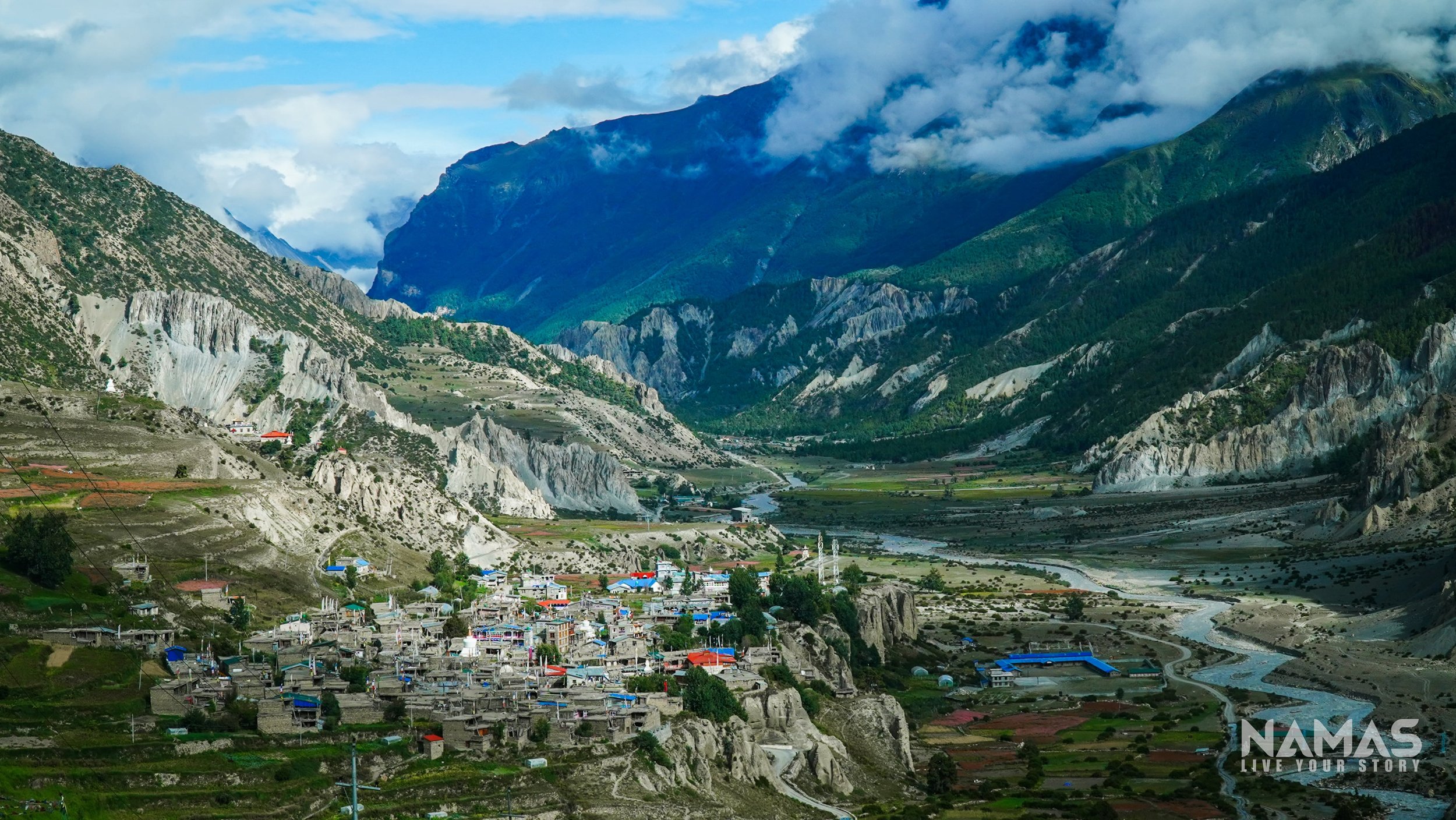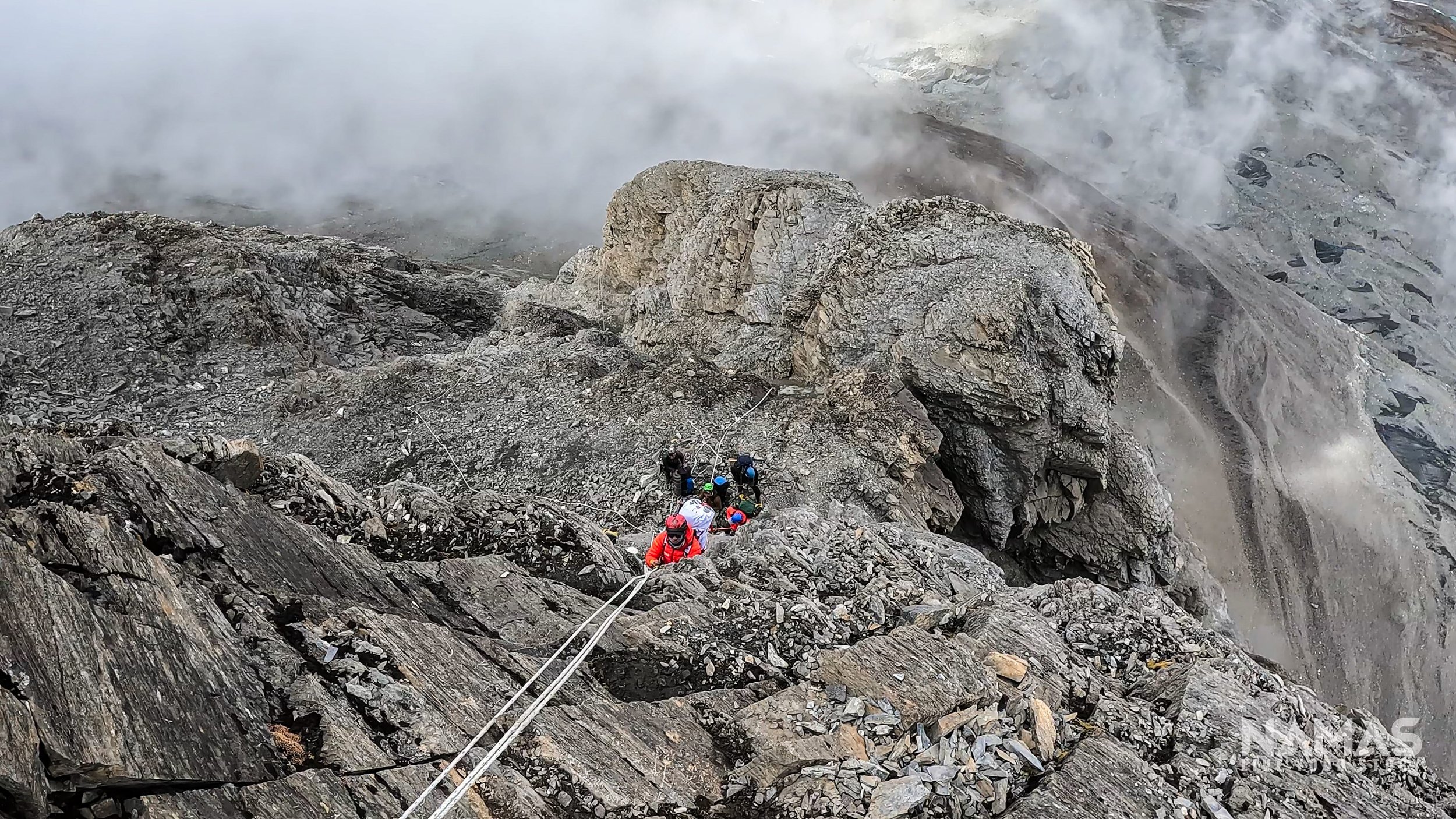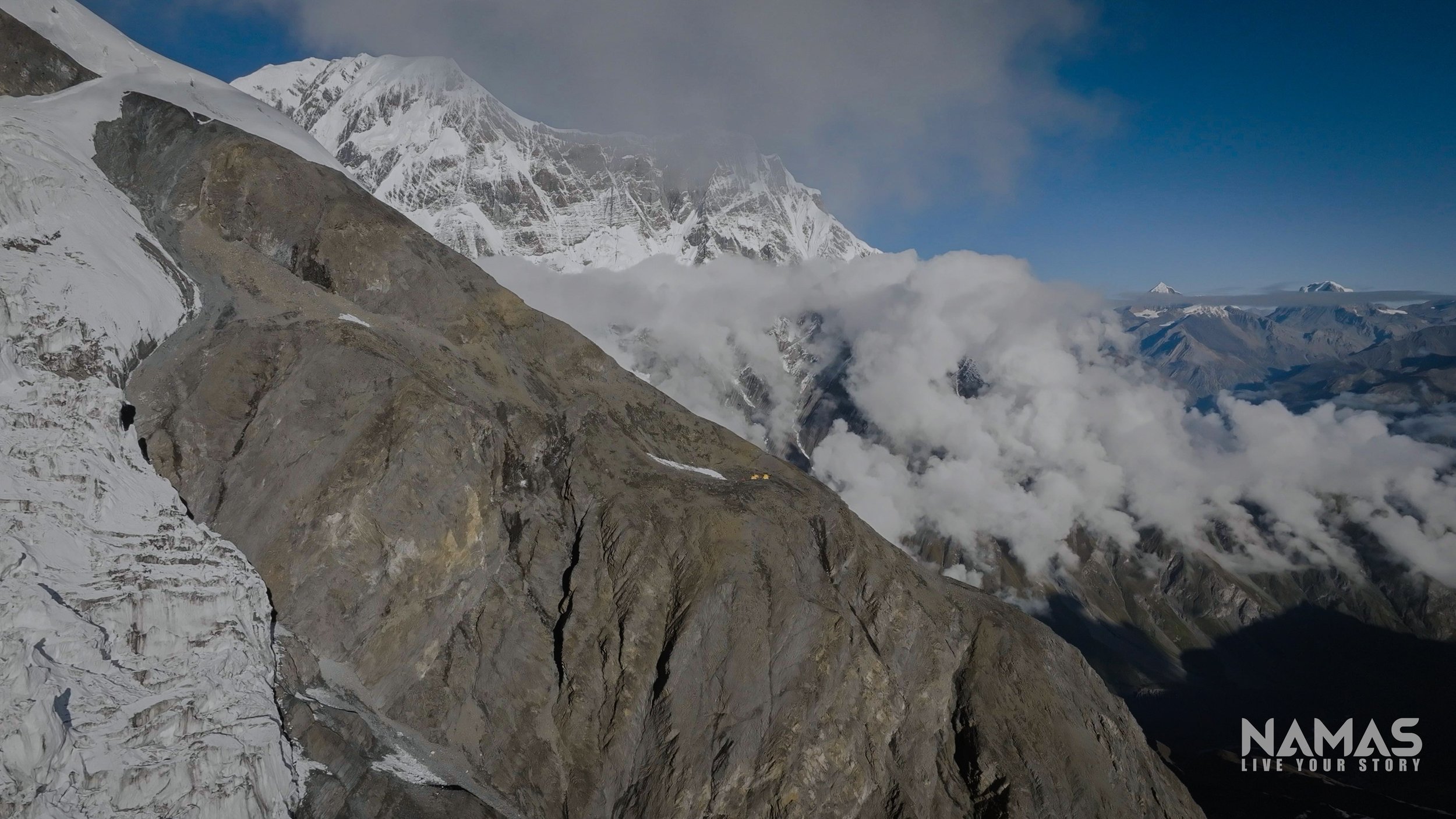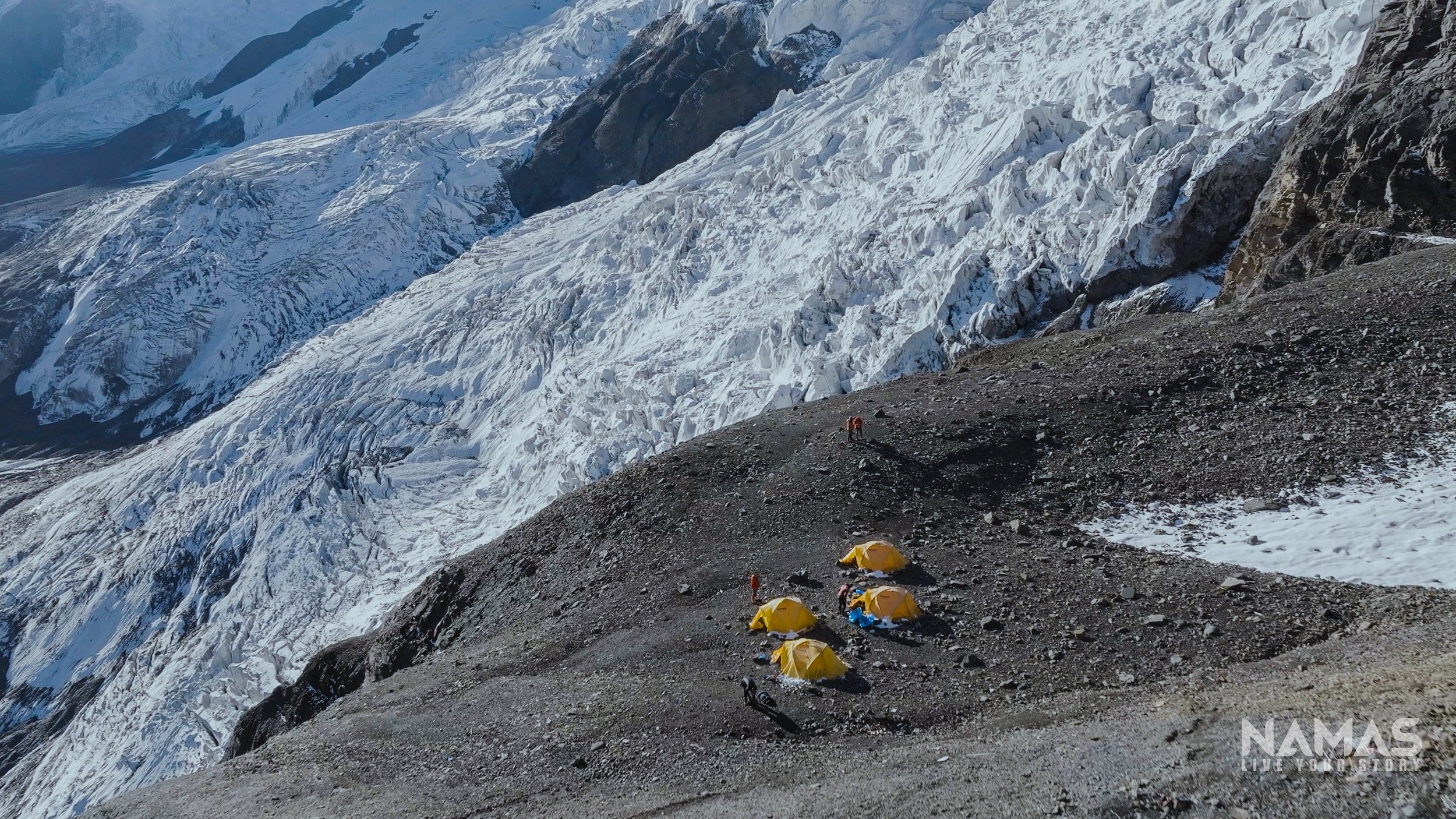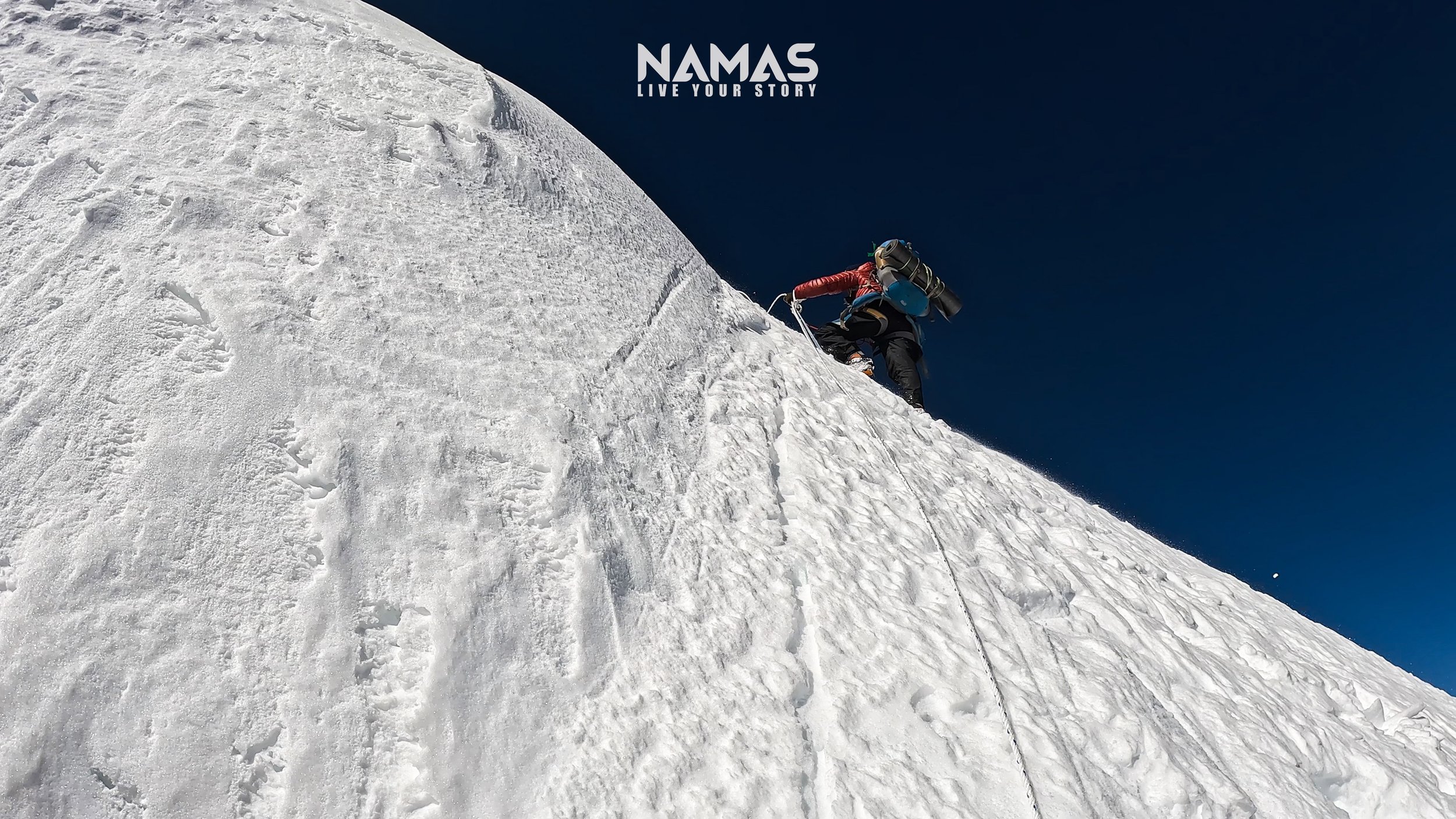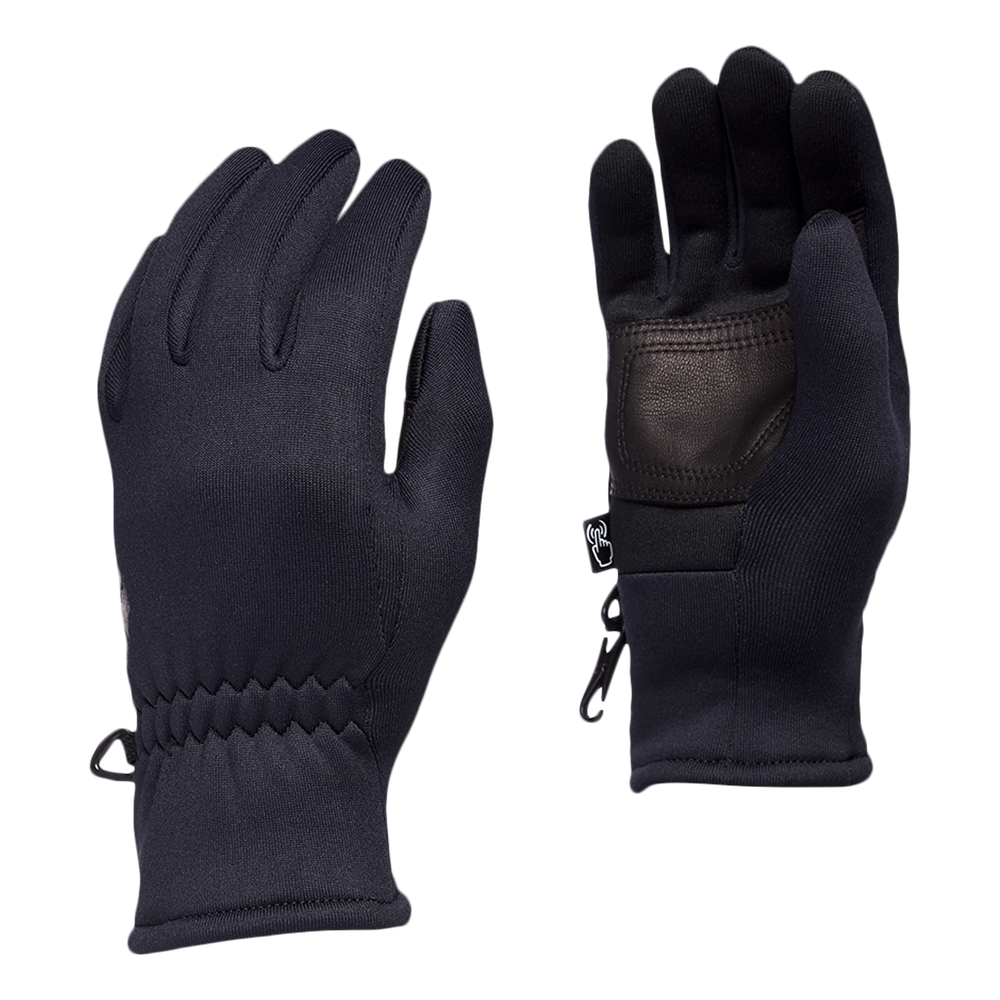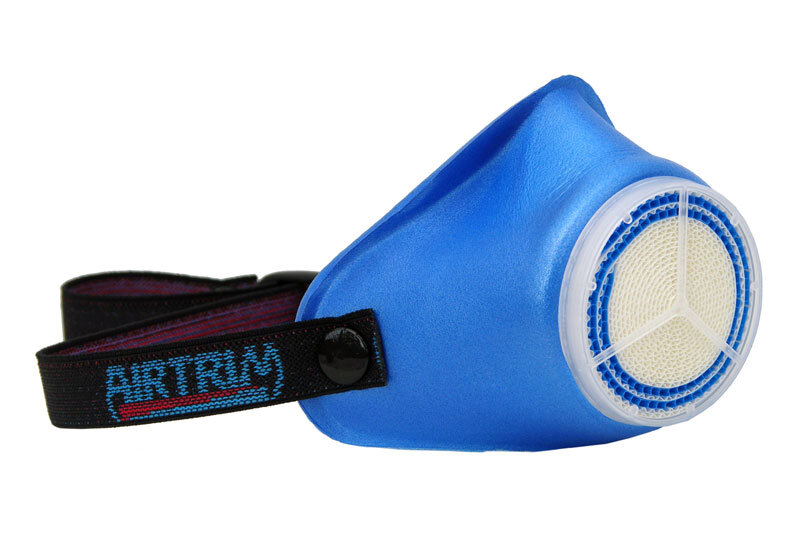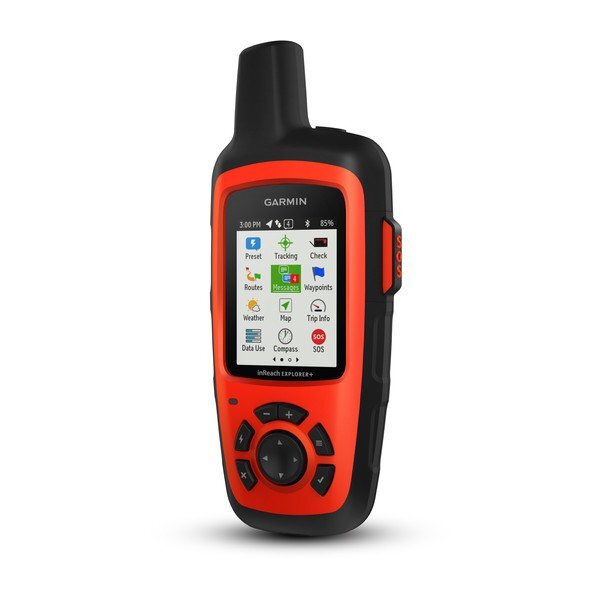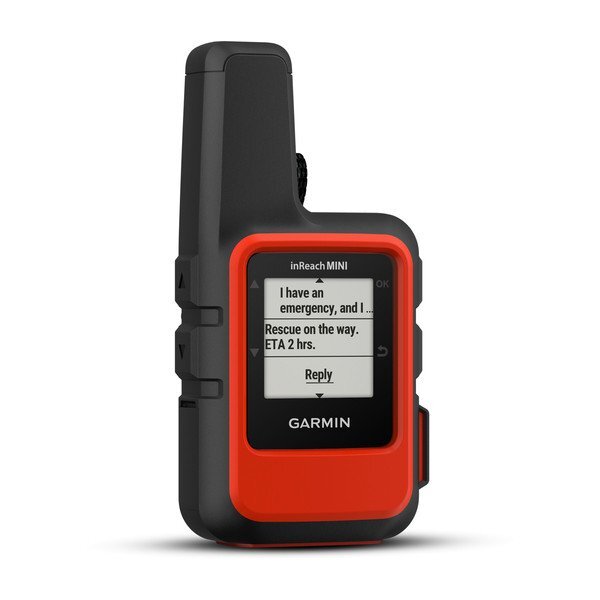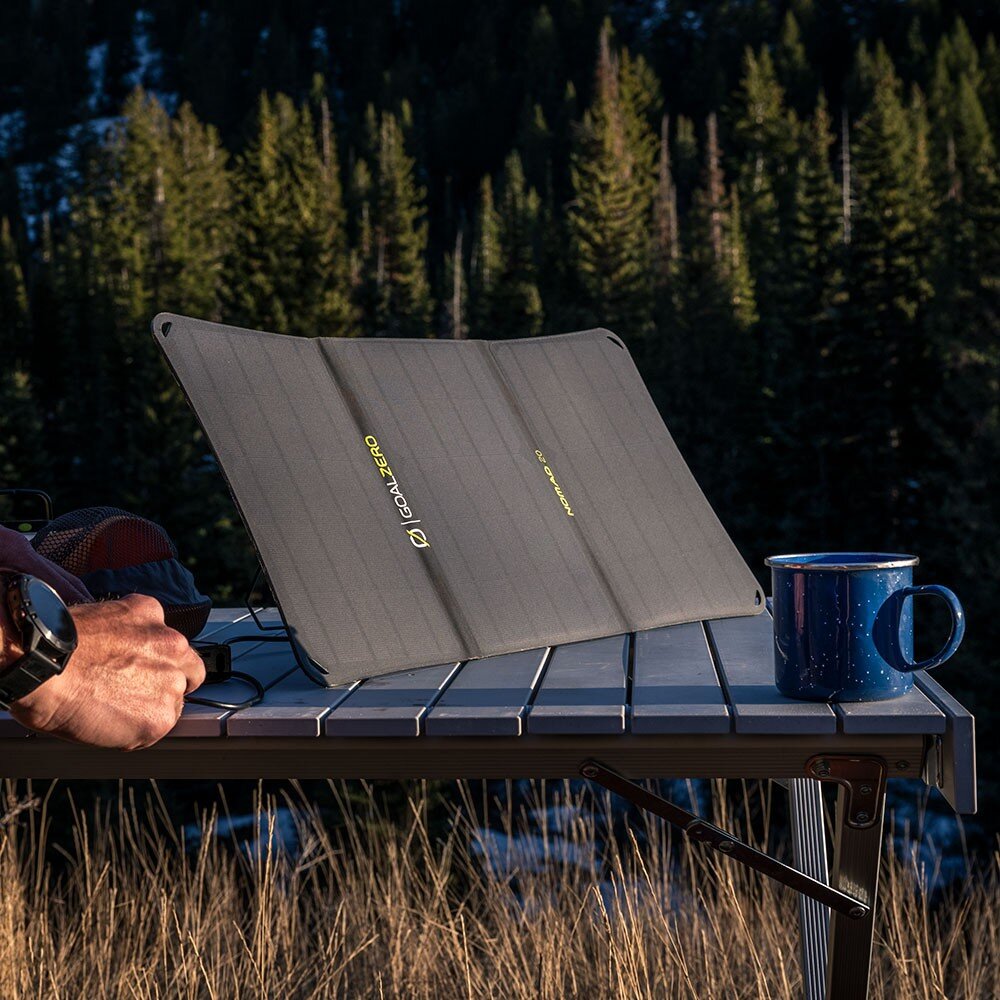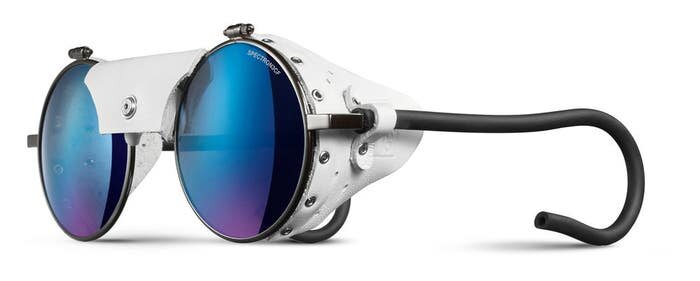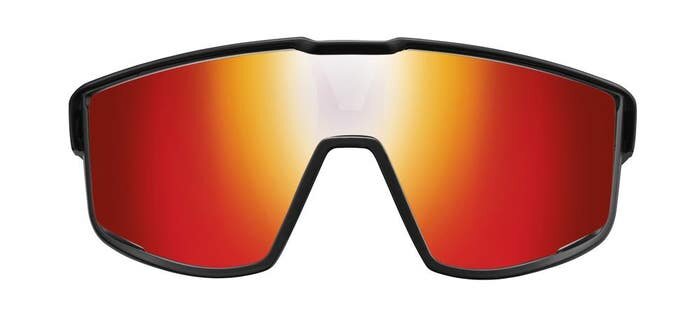Climbers Guide: Annapurna IV or Annapurna 4, 7525M
MOUNTAIN OVERVIEW
Name: Annapurna IV or Annapurna 4 (Link)
Elevation: 7525M/24688FT
Co-ordinates: 28°32′15″N 84°4′58″E
Crowd level: Minimum (Spring/Autumn, 0 - 20)
Difficulty grading: TD+/4 (Alpine/Fitness grading info)
Location: Annapurna region. Humde, Manang.
Parent Mountain: Annapurna massif
Acclimatisation Rotation: 1 rotation
Camps: 4 high camps
Summits: 1 Fore Summit / 1 Main Summit
Country: Nepal
ABOUT THE MOUNTAIN
Annapurna IV, standing at 7,527 meters, presents an ideal mountaineering challenge for climbers seeking a rewarding ascent with manageable technical requirements. Situated within the renowned Annapurna massif range, it occupies a prominent position between Annapurna II (7,937 meters) to the west and Annapurna III (7,555 meters) to the east.
Unlike its neighboring peaks, Annapurna IV offers a climbing route with fewer inherent dangers and a semi-technical nature, making it accessible to climbers with moderate experience levels. Within the Annapurna massif range, it is recognized as the least perilous and least technically demanding summit.
Despite its exceptional attributes, Annapurna IV remains relatively less frequented compared to other peaks in the region. However, its allure lies in its lesser-known status, offering climbers the opportunity for a unique and memorable ascent amidst the breathtaking Himalayan landscape.
HISTORY
Annapurna IV was first climbed in 1955 by a German expedition led by Heinz Steinmetz via the North Face and Northwest Ridge.
HOW TO GET HERE?
There is one main route to get to Annapurna IV Base Camp.
Via Humde village, Manang
Manang village, acclimatisation hike 3519M
Route to Annapurna IV Base Camp 4800M - 4850M
We highly recommend an acclimatization trek to Manang village at 3,519M, before hiking up to the AIV base camp. Climbers will navigate through lush pine forests and uphill terrain heading toward base camp. Climbers will have to hike up the steep hill and moraine to reach the Annapurna IV base camp situated at 4,800 meters.
Set against the backdrop of the majestic Annapurna massif, the Annapurna IV base camp offers a picturesque setting with panoramic views of Annapurna II, IV, and III. The flat surfaces of the hill provide ample space for setting up multiple camps, while nearby glacier lakes and streams serve as reliable water sources for expedition use.
Annapurna IV, Base Camp, 4800M - 4850M
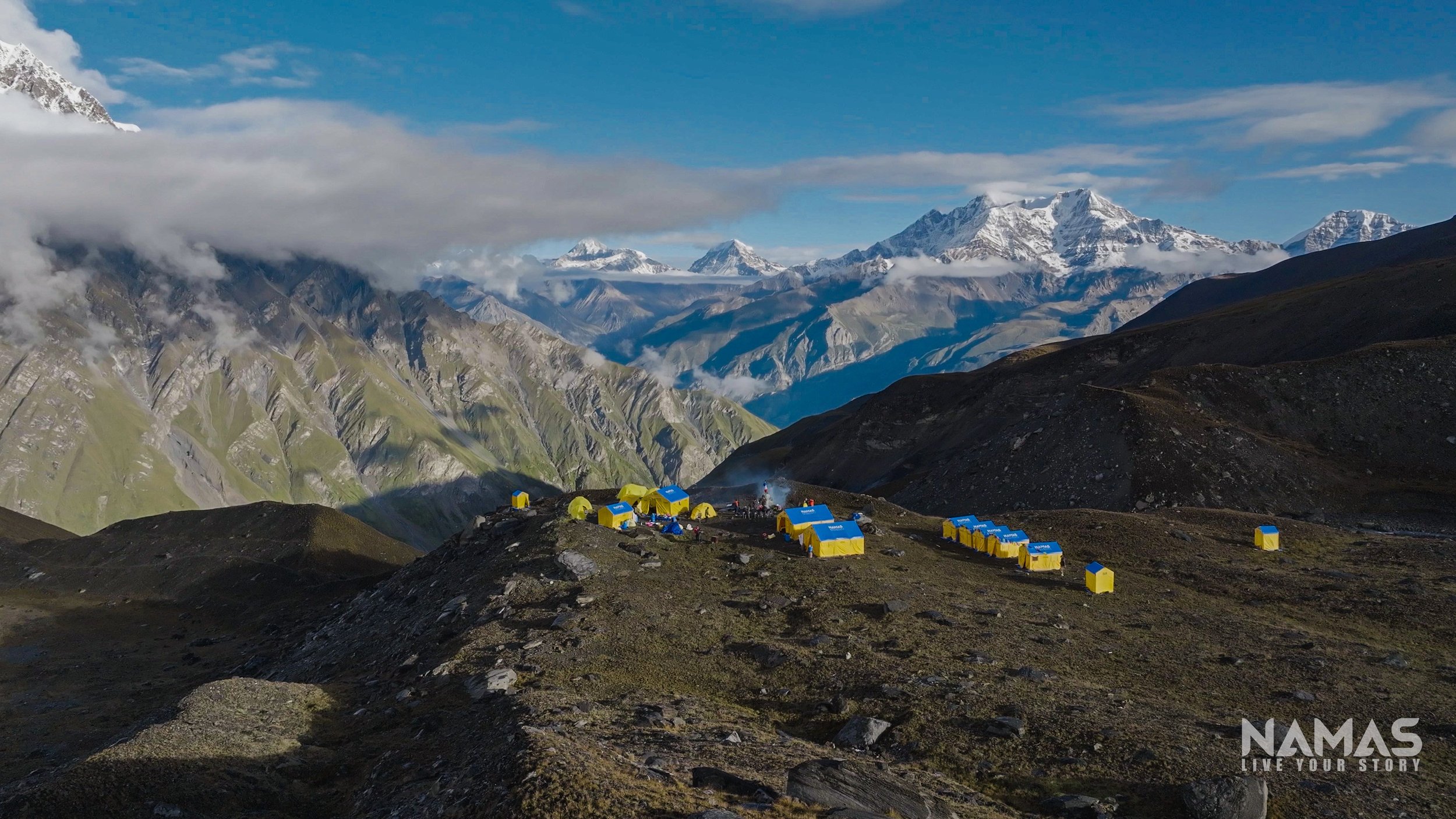
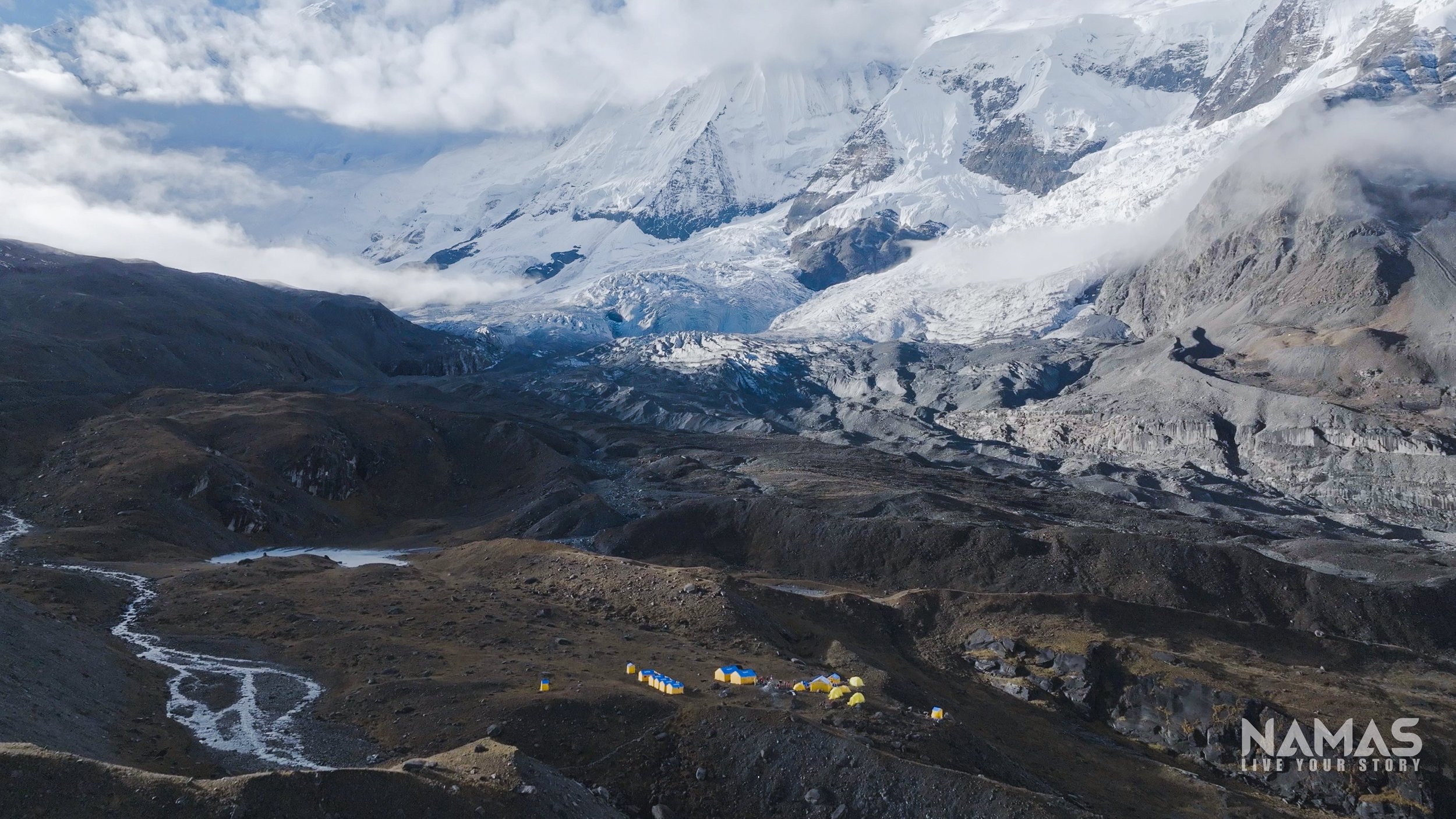
Route to Camp 1 5500M. 5 - 7 hours
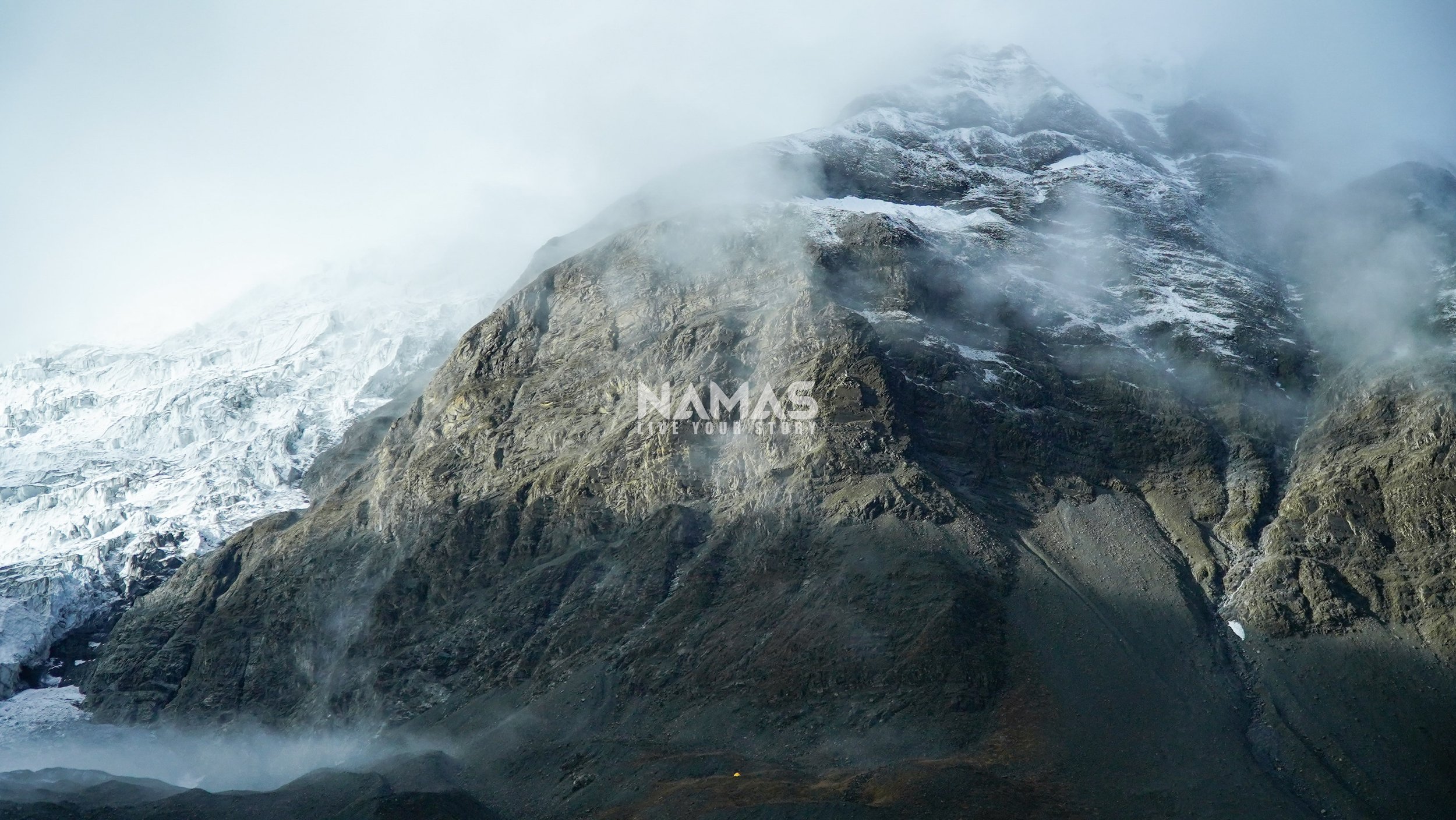
Traversing the moraine glacier, climbers will ascend to the base of the mountain. The journey to Camp 1 entails a challenging ascent up a steep, rocky slope. To assist climbers, a fixed line will be established by the team, facilitating vertical climbs with inclines ranging from 60 to 80 degrees on sharp rock slabs. Negotiating this rugged terrain involves scrambling, jummaring, and traversing exposed sections of the mountain—a crucial initial technical phase of the ascent.
Expeditions conducted during the spring season should anticipate encountering a substantial amount of snow compared to expeditions in autumn.
Camp 1, 5500M
Route to Camp 2, 5500M - 5600M. 5- 6 hours
The ascent to Camp 2 commences with a challenging uphill climb of loose rocky terrain before climbers reach a designated crampon point. Here, team members secure their crampons in preparation for an 80-degree steep climb across icy and snowy terrain.
Climbing towards camp 2, the route carefully avoids areas prone to avalanches, it skirts the left side of the mountain, where avalanche activity is more common. Despite initial apprehensions, climbers can rest assured that the climbing route is designed with safety in mind and is not susceptible to avalanches. Although a few crevasses may be encountered along the way, they are manageable, either by navigating around them or making calculated leaps across. It is essential for climbers to remain securely attached to the fixed line throughout the ascent.
Offering breathtaking views of the Annapurna wall and the expansive glacier, this climb presents a picturesque and rewarding experience amidst the awe-inspiring scenery of the Himalayas.
Annapurna IV Camp 2 (5500M - 5600M)
Camp 2, 6500M
Situated on a compact, level expanse of the mountainside, this camp offers protection from strong winds originating from the north and northeast sections of the mountain range. Prepare to be captivated by the breathtaking panorama unfolding before you. From this vantage point, the majestic peak of Manaslu, towering at 8,163 meters, commands attention in the distant horizon. Additionally, the formidable wall of Annapurna II dominates the landscape, extending far into the leftward vista, where the impressive silhouettes of Himchuli and the Chulu ranges adorn the skyline..
View from camp 2. Annapurna II 7937M and Manaslu 8163M in the far distant.
Route to Camp 3 (6 - 7 hours)
Upon departing from Camp 2, climbers will immediately face a challenging ascent up the headwall, marked by a steep incline. Following the climb past two prominent boulders, climbers will encounter a sizable crevasse directly ahead. While manageable, this crevasse presents a notable obstacle, with plans for ladder crossings in future expeditions should the opening widen.
Upon successfully navigating the crevasse and ascending another incline, climbers will find themselves traversing across a vast expanse of snowfield. After approximately 1.5 to 2 hours of rigorous climbing, Camp 3 comes into view, offering a welcome respite amidst the stunning mountainous terrain.
Camp 3, 6600M
Positioned on the expansive shoulder of the mountain, Camp 3 offers 360 views of the surrounding mountains. Fishtail (Machhapucchre) mountain is directly to the north-east along with Annapurna 1 and south. With a sweeping view of a significant portion of the mountain directly ahead, climbers have the option to strategize their summit route either along the mountain's slopes or via its southern aspect. Given the complexity of this vast slope and the absence of marked routes typical of more commercialized mountains, the presence of experienced leaders and skilled route setters is imperative.
Navigating this terrain demands a high level of expertise, as the route may not be easily discernible, and few climbers are likely to traverse it. Additionally, certain areas may pose a risk of avalanches, underscoring the importance of proficiency in navigation and avalanche detection. With the guidance of seasoned professionals, climbers can confidently navigate the challenges of Camp 3 and proceed with their ascent toward the summit.
Annapurna IV Camp 3 6600M
The chaos to navigate to make it to the summit.
Route to Camp 4, (6 - 8 hours)
Embarking from Camp 3 towards Camp 4 involves traversing snowy fields and negotiating uphill slopes before descending across snow fields. The subsequent grueling ascent presents a continuous uphill climb toward the mountain's shoulder, requiring precise navigation skills from route setters.
This route offers teams two challenging options: a direct push to the summit from Camp 3, with an overnight stop at Camp 4 on the return, or a camp at Camp 4 followed by a summit push before returning to Camp 3. Camp 4, positioned at 7000 meters altitude on a flat surface, demands extra caution due to potentially windy conditions.
Camp 4 can be on the setup on the shoulder (middle) of the mountain.
true Summit of Annapurna IV 7525M to Camp 4 (7000M). 10-12 Hours
Climbers need to prepare themselves mentally for a lengthy, steep, and arduous journey to the summit. The ascent from Camp 3 to the summit and back typically spans 12-14 hours. Following departure from Camp 3, climbers face a daunting 1000-meter climb characterized by its steepness and length, making it a formidable challenge.
Safety measures include the installation of fixed lines along perilous and overhanging sections of the mountain walls. Weather permitting, summit views offer a breathtaking panorama encompassing the entire Annapurna massif range, including Annapurna I, II, III, Gangapurna, and Tilicho Peak, as well as prominent peaks like Manaslu (8163 meters), Machhpucchre, Ganesh Himal, and Dhaulagiri.
Upon completion of the summit, the objective is to return safely to Camp 4. Camp overnight, rest for a night and then an early downhill morning to base camp, which is expected to be a long 8-10 hours descend from the mountain, bringing our expedition to a conclusion.
Namas Adventure team members at Annapurna IV 7525M true summit. This one will be for life time memories. What a climb and pure test of grit, will and mental toughness.
Watch full Annapurna IV 7525M Expedition video
Feel inspired to embark on a 7525M remote expedition with not many climbers? Let us be your guide to remote mountain peaks in the Himalayan region, including the challenging Annapurna IV at 7525 meters. Our specialized team excels in safely accessing and navigating these pristine mountain territories, opening up new possibilities for exploration and discovery.
Visit our website for more information on our Annapurna IV expedition and our range of international expeditions. For booking inquiries, reach out to us at bookings@namasadventure.com.
Unleash the explorer within you, and climb where less has been.
LIVE YOUR STORY - NAMAS ADVENTURE TEAM
A Guide to Climbing at-least one 8000M+ Mountain peak
How can I prepare to climb an 8000m peak? I aspire to summit at least one 8000m peak. What steps should I take to fulfill this dream of mine? These are common inquiries we receive from passionate adventurers seeking guidance on their journey to conquer the world's highest peaks.
Is it your dream to climb at least one 8000M+ in your lifetime? If so, then in this blog article we aim to guide you towards how to prepare for an 8000M+ climb through preparatory stages, and which 8000m peak should undoubtedly be on your initial list.
Embarking on the journey to summit an 8000m peak is a dream cherished by many adventurers. In this comprehensive guide, we provide expert advice to prepare you for this monumental endeavor and recommend the ideal peaks to start your journey. Pushing your limits and summiting one of the 8000M peaks on Earth can be an incredibly rewarding and life-changing experience.
Setting Your Goals High: Summiting an 8000m peak epitomizes the ultimate test of endurance, skill, and mental resilience. Few achievements rival the sense of accomplishment gained from conquering these towering giants. By setting your sights on an 8000m peak, you embark on an extraordinary adventure that promises unforgettable experiences and lifelong memories.
Preparation Is Key: Climbing an 8000m peak demands meticulous planning, rigorous training, and expert guidance. Before undertaking such a formidable challenge, it is imperative to undergo comprehensive mountaineering training and seek guidance from seasoned professionals. Additionally, climbing several 4000m-6000m peaks is essential to hone your skills and build confidence for the ultimate ascent.
Gradual Progression: Success in mountaineering requires patience and gradual progression. Before attempting an 8000m expedition, it is advisable to summit at least one 7000m or 7500m peak to acclimatize to higher altitudes and assess your readiness. This incremental approach allows you to gain valuable experience and confidence before tackling the grandeur of an 8000m peak.
Endurance & Strength is Essential: Achieving success at high altitudes necessitates exceptional physical fitness and endurance. Incorporate regular endurance, muscular endurance, and strength training into your routine to build stamina and resilience. Activities such as hiking, running, cycling, and weight training are invaluable in preparing your body for the rigors of high-altitude climbing.
Mind Over Matter: Mental preparedness is just as crucial as physical strength in the realm of mountaineering. Cultivating a positive mindset, envisioning success, and mentally preparing for the trials ahead are paramount. Maintaining focus, determination, and resilience amidst adversity is key to overcoming obstacles and inching closer to your summit goal. While these may seem like clichés, they hold immense significance during the final stages of safely completing your ascent of an 8000m peak.
So, which 8000M+ should you climb? Below are our recommendations
Choosing Your Peak: For climbers with minimum prerequisites, Cho Oyu (8201m) or Manaslu (8163m) stands out as the ideal 8000M mountain expedition. Amongst 8000M mountains, these peaks are renowned for their least difficult terrain, lower fatal rate, and higher success rates, making them favorable choices. However, it's essential to acknowledge the inherent challenges of any mountain expedition and approach each ascent with respect and caution. No mountain expedition should be taken lightly.
Consider Everest: For seasoned climbers with great fitness profiles, with a proven track record of conquering numerous endurance events such as marathons, ultras, and Ironman competitions, coupled with successful ascents on multiple 4000m, 6000m, and 7000m expeditions, Mount Everest beckons as the ultimate challenge. Everest calls upon those who are prepared to push their boundaries and stand atop the world's highest summit.
With an ever-growing community of climbers, well-established teams, and increasingly safer routes compared to other 8000m expeditions, Everest stands as an exceptional choice for individuals possessing exceptional physical fitness, unwavering mental toughness, a wealth of climbing experiences, and the financial means to embark on a guided expedition.
Moreover, considering the inclusion of Lhotse 8516M alongside Everest offers a compelling proposition. With approximately 70% of the route overlapping, this can fit right in the mix for double 8000er.
In Conclusion: Embarking on the journey to climb an 8000m peak is an extraordinary endeavor that promises unparalleled rewards. While meticulous planning, physical fitness, and preparation are essential, it's when the challenges become most daunting that your mental fortitude truly shines. Battling every inch of the mountain, refusing to surrender easily, and persevering through each demanding step are the ultimate keys to success.
Though these principles may seem straightforward in theory, they demand unwavering self-discipline, meticulous planning, relentless self-motivation, and a steadfast commitment to gradual progress from the very moment you commit to pursuing your dream of conquering an 8000m peak. Remember, the journey to success may be challenging, but with unwavering dedication and perseverance, you can ascend to the pinnacle of achievement.
At Namas Adventure, we are dedicated to helping adventurers like yourself turn their dreams into reality and conquer the world's highest peaks. Let's begin by discussing your plans and aspirations, and together, we'll take the necessary steps forward. Allow our experienced team to guide you towards achieving your dream of summiting an 8000m mountain peak.
Your dream adventure awaits—let's make your 8000M dream a reality.
Live Your Story.
Expeditions Mentioned
INTRODUCTION TO MOUNTAINEERING
IFMGA GUIDED 14 DAYS COURSE.
CHULU FAR EAST 6059M
6000M PEAK EXPEDITIONS
SOLO, COMBO OR THREE PEAKS
7000M EXPEDITIONS
BEGINNER. INTERMEDIATE & ADVANCED LEVEL 7000ER
CHO OYU 8201
MANASLU 8163M
EVEREST/LHOTSE
Baruntse 7129M or Himlung Himal 7126M which 7000M+ mountain peak to climb? - Namas Adventure
Baruntse and Himlung Himal are perfect intermediate level and semi-technical peaks to climb at 7000M level in the Himalayas. Whatever your goals for climbing a 7000M extreme altitude expedition be, a stepping stone to an 8000er peak or climbing simply climbing a 7000er mountain peak, we highly recommend these two peak expeditions. (Putha Hiunchuli 7246M is another great option)
Both expeditions are not crowded as the 8000er expeditions (Everest/Lhotse during spring & Manaslu during autumn). Between the two expeditions, Himlung Himal has seen slightly higher climbers compared to Baruntse. (2021 Autumn, Himlung Himal 77 - 90 climbers & Baruntse 20 - 25 climbers). So, you can certain that there won’t be a crazy amount of climbers during your expedition. Having said that, it is always good to have some number of team/s in the mountain. You can never be sure when an event turns out wrong in the mountains. Every day we are playing with the forces of nature. Balance is key.
Learning from past summit data, the Himlung Himal expedition has a higher rate of summit success compared to the Baruntse peak expedition where there are several summits during the autumn season compared to 0 summits during the spring season (commercial route). Let’s look at the data from the previous 5 years of Baruntse 7129M and Himlung Himal 7126M successful summits. (commercial expeditions). Source “Himlayan Database”
Successful summits, BARUNTSE 7129M VS HIMLUNG HIMAL 7126M
So, coming to the question of which 7000M peak I should climb?
Our answer is it depends on your preference. What is it that you want from your adventure? If the summit goal is important to you (no mountain summit is 100% guaranteed) then Himlung Himal 7126M has a better odds of making it to the summit than Baruntse 7129M and is technically less challenging.
Situations change in the mountains, you never know when the next dangers pop out in the mountain, or the hazard that was there before may not even exist. Weather is a huge factor during your high camp days. You may have a clear window for the next 7+ days or it might be pouring snow and low visibility, windy for an extended period of time. Being safe and returning home safely should be your primary goal. Whatever the circumstances, you should be open to all possibilities of success or failure. What is guaranteed is a raw and thrilling Himalayan adventure in your life memoir.
With the insight data from previous years, if you would like to choose any of the 7000M expeditions mentioned above then our team at Namas Adventure is here to assist and welcome you to take on your adventure of climbing a 7000M mountain. We organize the expedition during both seasons. For yearly mountain updates and summit success, hazards in the mountains and to be part of our team on 7000M mountain expeditions or other mountaineering expeditions, please email us at - bookings@namasadventure.com. Our team will be there to assist you on your next adventure of a lifetime.
Let’s go and explore the 7000ers.
Live Your Story
Namas Adventure Team
11 other essentials items for Mountaineering expedition: Easy to forget but super useful in the mountains - Namas Adventure
Mountaineering expeditions are tricky and when it comes to packing our gears it never ends. Pack, unpack, repack, re-check tour list and repack again. Wait for a few days and you feel you have missed something or you are wondering how can I make my pack lighter & smaller. So begins the process of organizing it and repacking it again. Our guess is you will never be satisfied with the process.
In this post, we have listed 11 essential items that may not look handy but are super useful during your mountaineering expedition. These items are not super-must and are easy to miss but having them in your pack can make your life a little bit easier during your expedition. Consider it mountain luxury at your disposal, adding a bit of comfort to your expedition.
Lip guards (Yes, more than one) & Sunscreen cream SPF 50, 70, or 100 (Also more than one)
SPF 50 blocks 98% of UVB rays
SPF 100 blocks 99% of UVB ray
Extra socks and gloves
We highly suggest you pack at least 1-2 pairs of expedition socks and gloves. There are days when you don’t feel like doing your laundry and having that extra socks is comfort on its own. Gloves are tricky, great if you don’t loose one, but if you do having that backup pair is key as you won’t be able to climb without your gloves. That we can guarantee and frostbite is not the ideal situation you want to experience.
Cold/warm air Mask regulator
This is one of the tools that we would consider essential for every climber. I It is amazing that many climbers are now attempting higher expeditions above 8000M+ like Everest, Makalu, Manaslu etc without supplement O2. (Kudos to the human potential and one’s motivation of pushing themselves) Or even climbing at 6000ers to 70000ers like Baruntse, Himlung, etc peaks. The air is so thin, dry, and crip cold that it takes a toll on our nose. Gross, it may sound but climbers know the issue of the clogged up nose and trying to get rid of this booger and breathing in cold air which is a struggle on its own. These air mark regulators are a godsend. It helps retain the moisture and regulate the cold air you breathe in to somewhat tolerable and a little warm. These are slowly becoming a must-have choice for many professional climbers. We can recommend two products which are listed below.
Thermos flask with a cup
Super handy when things are flexible and accessible especially when camping in high camps. That sip of warm water or tea is a god send and a booster. Imagine just having a cup when you want to drink water in your camps, the value of it is immense.
Nose/cheek Shielder
Nothing fancy here the UV rays from the sun and the cold air might be harsh on your cheeks and nose especially. So taping up can protect it from burning up.
Satellite communicator
Want to give peace of mind to your friends and families during your expeditions? Then satellite communicators are your answer. Garmin and other providers allow you to send messages to your loved ones or audience to keep track of your expeditions. (Works in most of the Himalayas Expeditions) You will have to use their subscription plans to be able to connect to the internet and use the features. The great news is you can use their FREEDOM plan when you are in the mountains and cancel it once you are back home.
Extra batteries, power banks and portable solar panels:
Solar technology keeps advancing and that’s great news for everyone. Highly recommend getting portable solar panels that you can just hang on your bag when juicing up your batteries and devices. Especially when you are in the remote corners of the Himalayas or other mountains, the sun is the only source of energy on clear days so you will want to make the best out of it and recharge all those batteries. Goal Zero makes some amazing portable solar panels and other devices that we can highly recommend for expeditions.
Extra Sunglasses
Nothing is more frustrating than losing or breaking your glasses when climbing in the mountains. Reflections from the sun are harsh and strong or even during gloomy days you must have a pair or even impossible to climb without a good visual. So always have an extra glass as a backup option. Plenty of brands out there but we are in love with JULBO pairs 😍.
Pee bottles
One can only understand the comfort of having a pee bottle when you are inside your tent and the temperature outside is freezing below -10C. Having a pee bottle at your reach is always handy when you do not have to keep getting out into the cold and dark to just your little business. That’s why we consider this, one of the musts.
Pro tip: Comes super handy when you are driving and you don’t have a place to make you wee stop 😅.
Nuts, Bars and Energy gels
You will always need that constant supply of nutrients in any form. Be it in solid-food form or liquid through the water. So having nuts, bars, or energy gels is always handy which are pocketable and easier to carry and just reach out when climbing or just resting. There’s plenty of amazing brands out there in the market. Cliff bars, High5 nutrition, SIS, etc
Wet wipes
Showers are a luxury during expeditions and it’s hard to maintain a constant flow of water at some locations or even non-existent. Wet wipes are your answers then. For the most part during the long mountain expedition, climbers understand that they may not be able to take shower for an extended period of time but we can adapt. Take a wet wipe shower (at least that’s what we call it) is a perfect alternative.
Do you have an item that you think is a must, on long expeditions that makes your life a little bit comfortable in the mountains? Please comment below.
And if you are planning mountain adventure in the Himalayas then our team is here at your service. We have yearly 6000M peak expeditions like Mera peak or Chulu West peak for beginners and experienced level climbers. 7000ers such as Baruntse 7129M Peak or Himlung Himal 7134M peak for the explorers or challenge seekers who want to climb higher peaks. 8000ers such as Manaslu 8163M or Makalu 8485M for the ones that want to get into the death zone and summit the Big E, Mt. Everest.
Explore More. Go.
Live Your Story
Namas Adventure team



